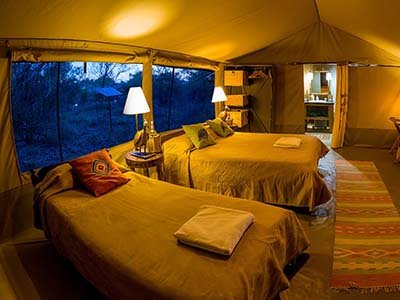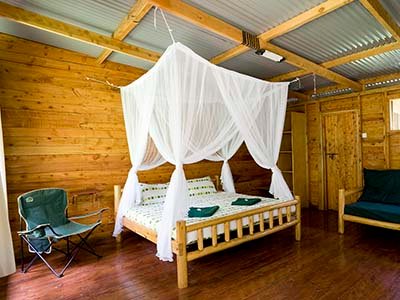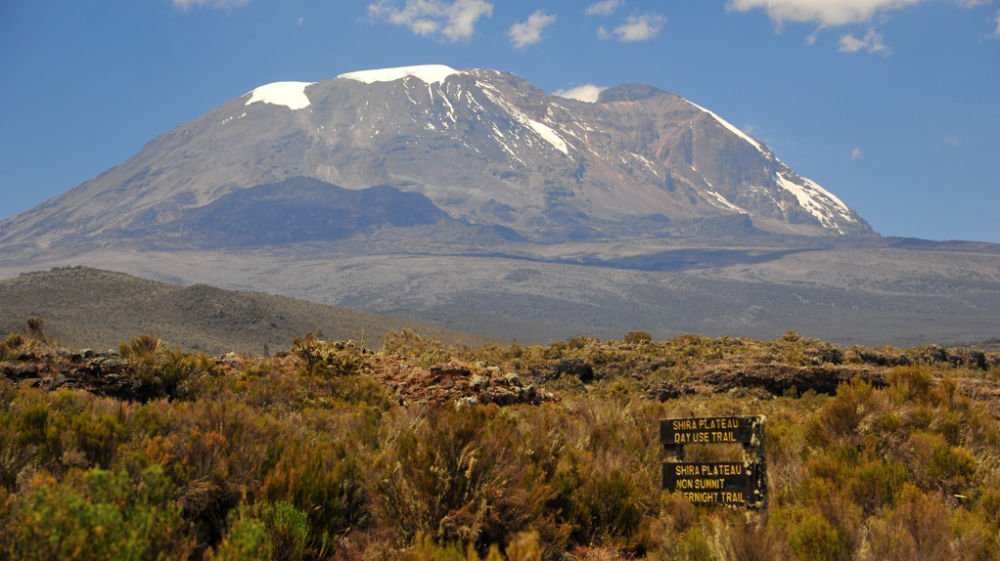Kilimanjaro National Park found in Tanzania was designated a UNESCO World Heritage Site in 1973 and made a national park in 1977. It is 45 kilometres long from west to east. Its elevations vary from 2,700 metres (Mandara) to 5,895 metres (Kibo).
There is a snow-capped monster that erupts from the African savannah at an almost arrogant 5,895 meters. Kibo (5,895 m), Mawenzi (5,149 m), and the Shira plateau are the three summits of Mount Kilimanjaro, a stratovolcano (3,962 m). As of right now, the volcano is still erupting to some degree. When it comes to fireworks, you can forget about Shira and Mawenzi since they both collapsed more than a million years ago, but Kibo, the sleeping beauty, still has some life in her. Its cone has been spotted burning and emitting ominous rumbling sounds from its core for the better part of a century.
The 1848 claims of German missionary Johannes Rebmann, who claimed to have seen a snow-capped peak on the Equator, were largely disregarded. Nonetheless, it was his statements that inspired some reckless individuals to attempt to scale the impressive giant. Although the first attempt was made in 1861, it wasn’t until 1889 that German geographer Hans Meyer succeeded in reaching the summit of Kibo. Kaiser Wilhelm Spitze (Kaiser Wilhelm Peak) was the official name given to the peak in honour of Wilhelm I, King of Prussia. When the country gained its independence in 1961, the peak was renamed Uhuru (Freedom) Peak to reflect its significance to the local people.
Kili, as Kilimanjaro is affectionately known, is featured prominently on many people’s lists of the world’s greatest experiences. When you reach the peak, it’s as though the entire continent of Africa is at your feet. The greatest part is that you don’t need much more than the proper attire, a modest outlook, and a healthy dose of resolve to make it to the top of the crater.
Adults in reasonably good shape should be able to make the ascent. While technical climbing gear is not required, it is recommended that you bring along items that will keep you dry and warm (including a hat and gloves). Bring an extra change of clothing in case the weather changes drastically. However, success is not the primary goal. One may go from the tropics to the Arctic and back on a Kilimanjaro climb. As you ascend Mount Kili, you’ll experience a variety of climates. You’ll begin your journey in the nearby hot, tropical area (800 to 1,900 meters). From there, you’ll make your way through the primate-, antelope-, and elephant-populated montane forest (1,900 to 2,900 metres) on foot. The heath and moorland (2,900–4,000 metres) follow the forest and are characterised by grassy, bushy landscapes dotted with large heather and alien-looking lobelias.
The last vertical kilometre ascends across a lava desert and patches of glaciers to the frigid peak at an altitude of up to 5,895 metres.
Accommodation in and around Kilimanjaro National Park
There are a number of cabins along the Marangu Path and other campsites along the other routes on the mountain.
Moshi town and the nearby settlement of Marangu both have a wide variety of lodging options for those not staying within the park. Please plan ahead and book with a reputable travel agency.
The six-day Marangu Trail is the most traditional route up Mount Kilimanjaro
Day one, you’ll go 8 kilometres ( about 6 miles) from Marangu Gate to Mandara Hut (an ascent of 760 m).
On day two, you’ll travel 11 kilometres (a 1,053-meter ascent) to Horombo Hut.
There will be no activity on Day three.
You’ll walk 11 kilometres to Kibo Hut on the fourth day. The trip should take you between 4.5 to 6 hours (a 970-meter ascent).
On Day five, you’ll hike 21 kilometres from Kibo Hut to Uhuru Peak and back (an elevation gain of 1,142 metres and a decrease of 2,112 metres), a journey that’ll take you anywhere from 14 to 17 hours (ascent 1,142 meters, descent 2,112 meters).
On day six, you’ll walk for about five to six hours to Marangu Gate, which is 19 kilometres (1,810 meters) away.
Alternative routes for Climbing Mount Kilimanjaro
The Machame, Rongai, Umbwe, and Londorosi/Lemosho paths aren’t the only ones that go to the top of Kibo. The Machame, Umbwe, and Londorosi/Lemosho routes all utilise the Mweka route as a descending corridor.
Just a reminder that while many of us are capable of climbing Mount Kilimanjaro, no one ever claimed it would be easy. Keep in mind that the air at the peak has just 40% as much oxygen as it does at sea level and that the hike will be difficult at any altitude.
How to reach Mount Kilimanjaro National Park
The park is readily accessible; the entrance is through a paved road (with steep slopes in the last section). The 123-kilometer trip from Arusha town takes two hours, with the first hour being 80 kilometres to the town of Moshi. It takes another hour to go to Marangu Gate (1,970 metres) through the Himo township.
Although the major Marangu route is busy all year, the less popular routes are quite calm.







